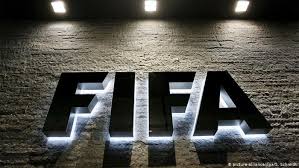By David Owen
April 1 – There’s more than one way to skin a cat. FIFA succeeded in meeting its 2021 revenue projections. Indeed, it exceeded them somewhat, securing $766.5 million against a budgeted $742 million. But the route the football body took to arrive at this happy conclusion is far different from that expected – and somewhat mysterious.
Under the revised budget put out in June 2020, this $742 million was projected to come from four sources: $365 million from broadcasting rights, $174 million from marketing, $145 million from licensing (ie broadly video games) and $58 million of everybody’s favourite, “other revenue”.
We now learn that what has actually happened is this:
Broadcasting rights was far below budget at $123.1 million. I don’t know why this should have been, unless FIFA was expecting to generate a lot more than it did from the Arab Cup (about which more later). However, with finance committee chair Alejandro Dominguez saying FIFA is “well on track” to exceed its 2019-22 revenue target of $6.44 billion – albeit thanks mainly to a men’s World Cup staged in the final weeks of the four-year cycle – I don’t see it as that major an issue. It seems odd though that only $2 million of this 2021 revenue came from Europe.
Marketing rights were also below budget at $131.4 million; again, not altogether surprising, though perhaps an ongoing source of frustration for president Gianni Infantino and his fellow travellers.
By contrast, licensing rights – FIFA’s star financial player of recent times (though for how much longer?) – was nearly 25% above budget at $180.2 million.
That all adds up to $434.7 million, $446.9 million if you add in $12.2 million of Arab Cup ticket sales. So where did the other $320 million or so come from? Brace yourselves: “other revenue” and, oh yes, “other income”.
To be fair, the sources of the $85.6 million of other revenue are explained pretty clearly in FIFA’s financial statements: it is mainly income from the Club World Cup, the Tokyo Olympics, the FIFA museum and a few other odds and ends.
Other income is a different matter. There is $234 million of the stuff – the biggest single source of revenue in the year. Yet, strangely, a set of financial statements that is commendably transparent in other respects, gives no itemised breakdown. This is what readers are told: “Other operating income includes host country contributions for the event operational costs of hosting and staging the FIFA Arab Cup 2021, the remission proceeds awarded to FIFA by the United States Department of Justice as well as other sources of income, such as rent income, termination fees relating to contract cancellations, and a gain on sale of property and equipment.”
Since FIFA has omitted to do so, let me attempt a breakdown based on information provided elsewhere in the financial statements.
Arab Cup: This ended up being the main test event for this year’s World Cup. In the small print of Note 7, we read that hosting and staging costs were “mainly offset by host country contributions of $77.5 million”.
So it looks like $77.5 million of FIFA’s “other income” came from Qatar. That leaves $156.5 million still to attribute.
Moving on to the small print of Note 8, we read: “In 2021 the US Department of Justice granted FIFA $60.4 million in remission proceeds, representing monies forfeited by defendants to the US government that are returned to victims of their criminal schemes.” So, lopping off this amount, that leaves $96.1 million of “other income” still to itemise.
Note 20 appears to indicate that FIFA disposed of $15.6 million of operational buildings, assets under construction and land in 2021. I don’t think one can take it as read that this is the same as the “gain on sale of property and equipment” mentioned above, but it’s all we have to go on.
That still appears to leave a substantial amount of “other income” un-itemised and only “rent income” and “termination fees relating to contract cancellations” among the stipulated sources left to cover.
If one makes the assumption that rent income is unlikely to account for all that much, I am left concluding that either FIFA made a towering book gain on the property it sold, or it may well have received a really meaty termination fee – conceivably measured in the tens of millions of dollars – for cancellation of a contract or contracts.
What deal could possibly have been big enough to account for that scale of payment? I suppose it could be linked to the $200 million-plus undershoot in broadcast revenue. Or – just a thought – could it conceivably be EA Sports-related? It emerged last autumn that the business behind the FIFA video games was “reviewing” its naming rights agreement with FIFA thought to expire at the end of this year.
These suggestions might be miles wide of the mark, but if the termination fee really is in the tens of millions of dollars, the implication would be that the terminated contract is itself, well, big. Dare I suggest it would have been preferable if FIFA had been transparent enough to break down the $234 million itself so that outsiders like me did not have to try and do so?
A couple of other points related to FIFA’s 2021 performance.
The football body spent less than budgeted, at $1.08 billion, versus an anticipated $1.26 billion. This was achieved partly because spending on development and education weighed in at $555 million against $603 million budgeted.
Infantino’s compensation related to 2021 appears to have amounted to fractionally over CHF3 million. This comprises CHF1.95 million as his base gross salary, CHF1.03 million as his variable gross salary (actually paid in 2022) and CHF24,000 of allowances.
Contact the writer of this story at moc.l1745643641labto1745643641ofdlr1745643641owedi1745643641sni@n1745643641ewo.d1745643641ivad1745643641

